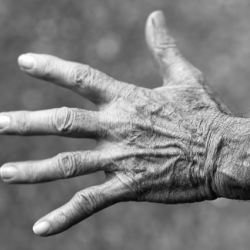The Center for Medicare Services (CMS) unveiled their latest consumer tool, a comparison of Hospice care, aptly titled Hospice Compare. For those of you unfamiliar with hospice programs, they are designed to provide comfort to patients felt to be in their last six months of life. Within a few moments of CMS’s press conference announcing the consumer website, the critics emerged. As MedPage reported,
“Hospice experts have raised two complaints about the system. One is that the measures chosen for reporting may not fully reflect care quality. The other may seem odd: it's that, while the chosen measures aren't inappropriate for evaluating hospice care, nearly all hospices perform very well on them, and thus the data don't provide any differentiation when consumers try to compare different facilities.”
Consider the first criticism; the metrics do not reflect all of the quality issues. No surprise here, all of the self-reported measures [1] are process measures, whether a particular activity was performed. There were no outcome measures; no one asked if the patient and family were comforted. But how do you measure comfort, is there an objective scale or simply an emotional response by the family? There is nothing wrong with the family’s response, it may be the most useful metric of all, as I have previously written Yelp is consulted about physicians more than CMS’s Physician Compare (the doctor version of Hospice Compare).
The average score for 6 of the seven measures was in the ninety percent range (As the website states higher percentages are better). You would think this is good, but the critics believe that everyone doing well doesn’t help us separate the good from the bad. It is the Hospice version of everyone getting a trophy for participating. The critics point out that hospices have known which metrics would be measured and reported (after all, they were required to report the information) and studied for the test. But weren’t the critics the same group of individuals that helped CMS define the criteria?
Sy Syms, for those not raised in the New York area, sold lower cost clothing on television, always ending their ads with the company tagline, “An educated consumer is our best customer.” And it is the educated consumer that can benefit from Hospice Compare’s data because one of the real measures of comfort is included in the reporting, and interestingly enough, the average score for hospices for this measure was 77%. The metric was “Patients who got a timely and thorough pain assessment when pain was identified as a problem.” And parenthetically the hospice staff had 24 hours to make that assessment. For a patient in pain, that could be a long time. (The same 24-hour window was also applied to shortness of breath. Can you imagine you or your loved one waiting hours to have your shortness of breath treated?)
I think CMS is making an effort for its’ customers, but it hasn’t found the metrics that will be helpful. Hospices spent time and money to satisfied CMS’s regulatory requirement to provide this data (failure to do so resulted in a 2% reduction in CMS payments which can be a significant number). Couldn’t we have run a pilot study and found measures that could be relatively easily measured and educate consumers? Wouldn’t that be more cost effective? And more importantly, wouldn’t it meet the Sy Sym’s standard?
[1] Measures included assessing a patient level of pain and shortness of breath upon admission, the beliefs and values of patient and caregiver specifically concerning hospitalization and resuscitation. Other measures assessed whether opioid-related constipation was treated pre-emptively and whether shortness of breath was treated. The final measure was whether pain issues were assessed promptly.

